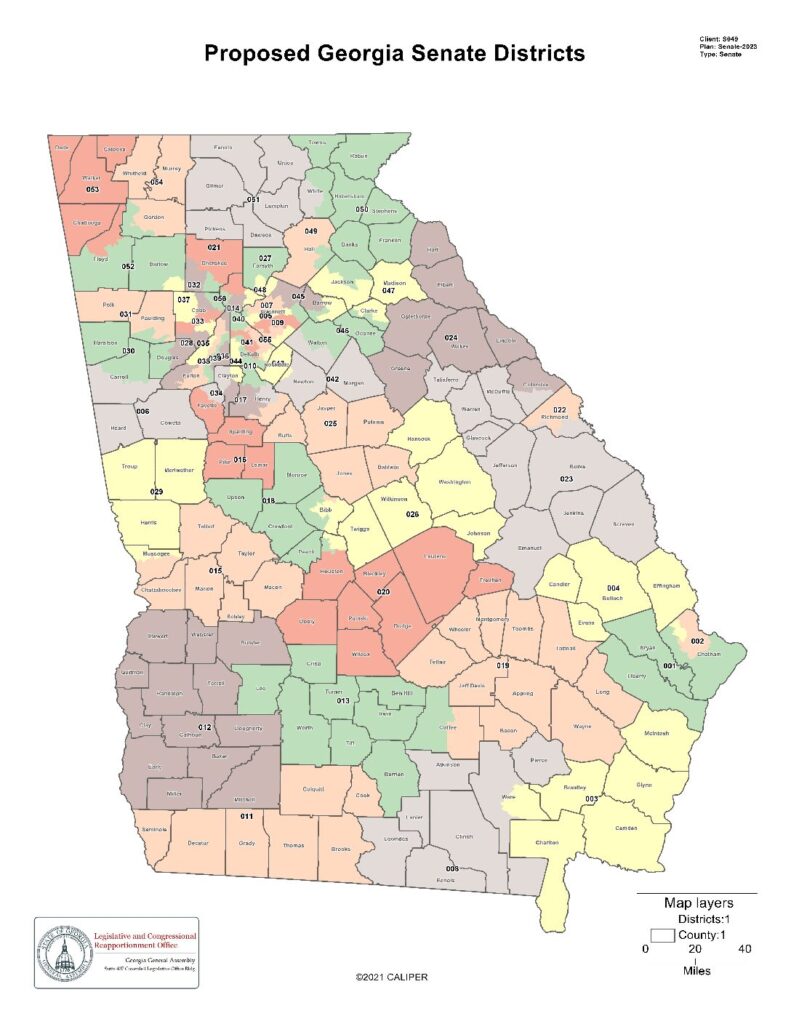
ATLANTA – A proposed state Senate redistricting map released Monday would create two additional Black majority districts in the General Assembly’s upper chamber in keeping with a federal court order.
Senate District 17 in Henry and Newton counties and Senate District 28 in Douglas and Fulton counties would become majority Black under the proposed map, released two days ahead of a special legislative session on redistricting beginning Wednesday.
The addition of two Black majority state Senate districts would comply with a ruling U.S. District Judge Steve Jones handed down last month that found the congressional, state House and state Senate redistricting maps the Republican-controlled General Assembly drew two years ago in violation of the federal Voting Rights Act.
Jones also ordered state lawmakers to add five Black majority seats to the Georgia House and one Black majority seat to the state’s congressional delegation.
Currently, Republicans hold 33-23 and 102-78 advantages in the state Senate and House, respectively. The GOP holds nine of Georgia’s 14 U.S. House seats.
The 17th Senate District is currently served by Republican Brian Strickland of McDonough, chairman of the Judiciary Committee. The 28th Senate District is currently represented by the GOP’s Matt Brass of Newnan, chairman of the Rules Committee.
Jones’ ruling ordered Black majority legislative and congressional districts added in portions of metro Atlanta that have seen dramatic growth in Black residents in recent years.
Under the proposed map, the voting-age population of Strickland’s 17th Senate District would go from 59.4% white to 60.4% Black. That would be accomplished by shifting the district’s boundaries westward to take in a large portion of majority-Black Clayton County.
Changes to the 28th District would be more significant. The district Brass now serves would be shifted northward out of Coweta County to include southwest Fulton County, eastern Douglas County, and southern Carroll County.
The voting-age population of the 28th Senate District would go from 69.4% white to 53.4% Black.
The proposed map also would modify 13 other Senate districts from their current boundaries. Eight of those districts would remain majority Black, while five would remain majority white.
The lawsuit that led to Jones’ ruling pointed to a 2020 Census that showed all of Georgia’s population growth during the decade of the 2010s was among people of color, while the state’s white population declined. However, that minority population growth was not reflected in the redistricting maps the legislature drew in 2021, the plaintiffs argued.
The proposed Senate map will be followed later this week by draft maps for Georgia’s state House and congressional districts. Lawmakers must approve new district lines by a week from Friday, the deadline Jones set for them to finish their work.